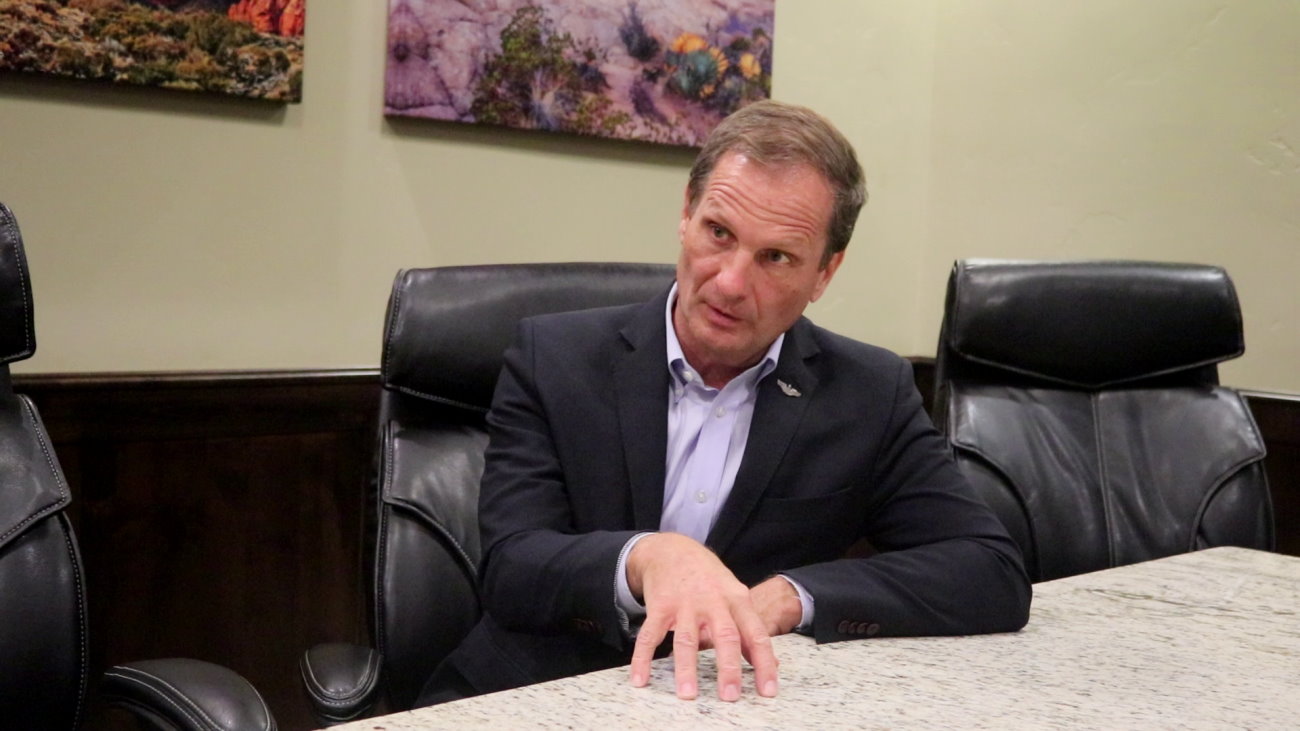ST. GEORGE — Utah’s mighty five national parks could become the mighty six if legislation reintroduced by Utah Republican Congressman Chris Stewart creating Escalante Canyons National Park gains enough traction in the long run.

This is the second time Stewart has introduced legislation to turn what remains of the Grand Staircase-Escalante National Monument into a national park. More specifically, it would turn one of the three remaining fragments of the monument into a national park while the two remaining pieces would retain national monument status.
Stewart announced the reintroduction of his legislation last month and spoke with St. George News about it soon after while visiting Southern Utah.
“It’s the right thing the state. It’s the right thing for the people. It’s the right thing for the world community,” Stewart said, though added he knows his bill won’t get very far this year.
Stewart originally introduced the legislation in December 2017.
“It’s not going to happen in this congress, we know that,” he said. “None of these efforts happen in one congress. It usually takes three or four or five years. … We know it’s going to take a couple of years and want to keep at it.”
The original Grand Staircase-Escalante National Monument was created in 1996 by then-President Bill Clinton and covered an area of nearly 2 million acres. Over the next 20 years, it became a sour point between area residents, lawmakers and the federal government.

The move was seen as abuse of the Antiquities Act by opponents. It also banned certain uses of the land previously enjoyed by area residents.
However, President Donald Trump shrank the national monument to 1 million acres in 2017 and broke it into three parts.
Now Stewart wants to codify those three remaining parcels into the Grand Staircase National Monument, Escalante Canyons National Park and Kaiparowits National Monument in order to make it harder for a new presidential administration to restore the monument’s original boundaries.
“We can’t have it going back and forth every four years,” Stewart said.
Specifically, Stewart said he wanted to prevent any changes potentially rolled forward by a Biden administration should former Vice President Joe Biden win the presidency.
Other aspects of Stewart’s bill include:
- The new park conserves this nationally important area while allowing access for hunting, fishing, trapping and grazing.
- The park maps are still being finalized by the local communities, but the boundaries will fall within the Escalante Canyons Unit of the Grand Staircase-Escalante National Monument.
- Transfers “Hole in the Rock Road” to the state of Utah in recognition of the road’s historical significance as a pioneer trail for the early settlers sent to the area by leaders of The Church of Jesus Christ of Latter-day Saints.
- Creates a “management council” comprised of local officials to draft and oversee a management plan for the new monuments and national park, giving local leaders a powerful voice and seat at the table.
Standing opposed to Stewart’s efforts is the Grand Staircase-Escalante Partners group. The Partners are one of several groups currently involved in a lawsuit against the Trump administration over shrinking the original monument.

“Our organization opposes Stewart’s proposal because it seeks to solidify the illegal reduction of the monument boundaries as well as the stripping back of protections for the monument’s natural and cultural resources,” Sarah Bauman, executive director of Grand Staircase Escalante Partners, told St. George News in an email.
“It prioritizes grazing, hunting and recreation, but fails to prioritize conservation or include the capacity to ensure that resources are protected and safeguarded,” she said.
While the Partners believe there should be a level of local input on the management of the national monument, Bauman said Stewart’s bill doesn’t account for the input of indigenous people who have ancient ties and interests to the area. Individuals with conservation backgrounds, like biologists and botanists, should also be considered.
“Based on the language of the proposal, the management council (comprised largely of local county commissioners appointed by the president) would be responsible for creating the land management plans; however, there is no language that speaks to how conservation would be ensured, and no one appointed by the president to the council would be required to have specific land management or conservation expertise,” Bauman wrote.
Regardless of who becomes the next president of the United States, Bauman said her group supports the restoration of the national monument’s original boundaries and will continue to request that be done.
Copyright St. George News, SaintGeorgeUtah.com LLC, 2020, all rights reserved.